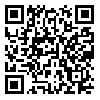Volume 4, Issue 7 (8-2014)
JRSM 2014, 4(7): 1-16 |
Back to browse issues page
Download citation:
BibTeX | RIS | EndNote | Medlars | ProCite | Reference Manager | RefWorks
Send citation to:



BibTeX | RIS | EndNote | Medlars | ProCite | Reference Manager | RefWorks
Send citation to:
Effect of age and three different feedback receiving on a hand movement pattern. JRSM 2014; 4 (7) :1-16
URL: http://jrsm.khu.ac.ir/article-1-2198-en.html
URL: http://jrsm.khu.ac.ir/article-1-2198-en.html
Abstract: (9894 Views)
The purpose of this study was to determine the effect of two different age groups (children and young adult) to learning of temporal-special coordination hand movement pattern. Sixty subjects according to the age (children – young adult) and receiving feedback (100%, omitted, self-control) were randomly divided into six groups. This study was done in three days. All subjects practice 100 trails of movement task in each day of first and second days. Retention tests were done in second and third days and reacquisition test was done in the third day. Analysis of variance (ANOVA) with repeated measures and two way ANOVA was used to data analysis. All participants in the first day improved their accuracy across practice trials. In the second day children did not improve their accuracy but young adult experienced improvement across practice trials. There was not significant difference between retention children tests but that was significant about young adult. During the retention tests children who received 100% feedback was significantly better than other children feedback groups and there was no significant between young adult feedback groups. During the reacquisition test children who received 100% feedback was significantly better than other children feedback groups and there was no significant between young adult feedback groups. Results from this study showed young adult are better than children in the learning of this pattern, receiving more feedback can improve motor learning in children (in contrast with guidance hypothesis) and we must not expect motor skill acquisition occur in children like young adult.
Type of Study: Research |
Published: 2014/08/15
Published: 2014/08/15
| Rights and permissions | |
 | This work is licensed under a Creative Commons Attribution-NonCommercial 4.0 International License. |



